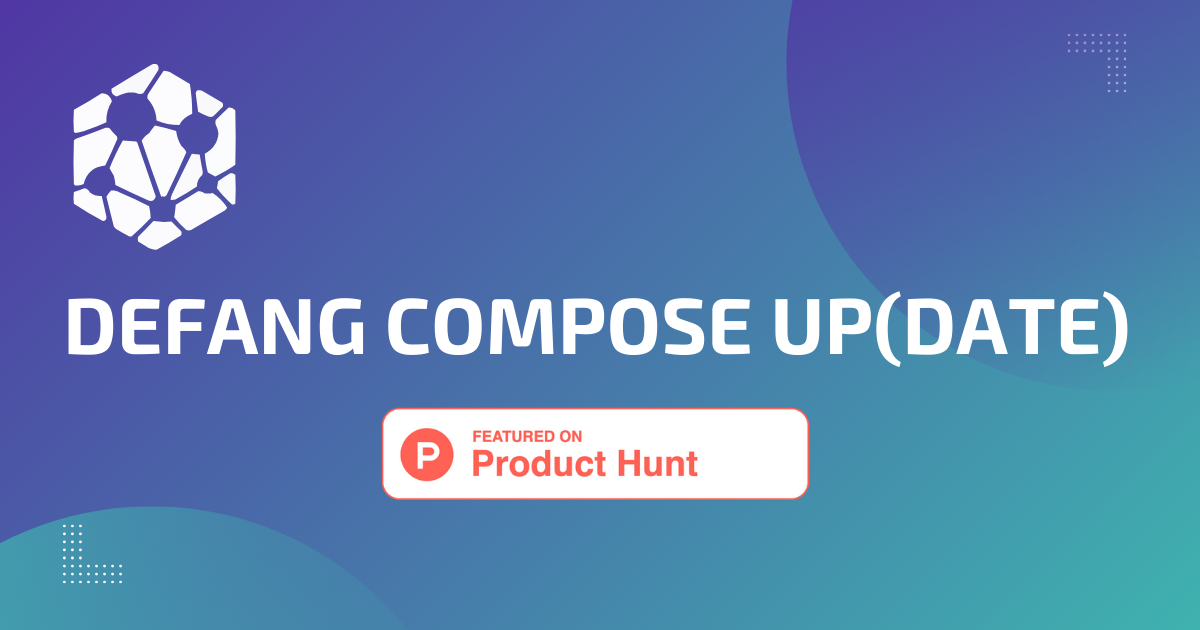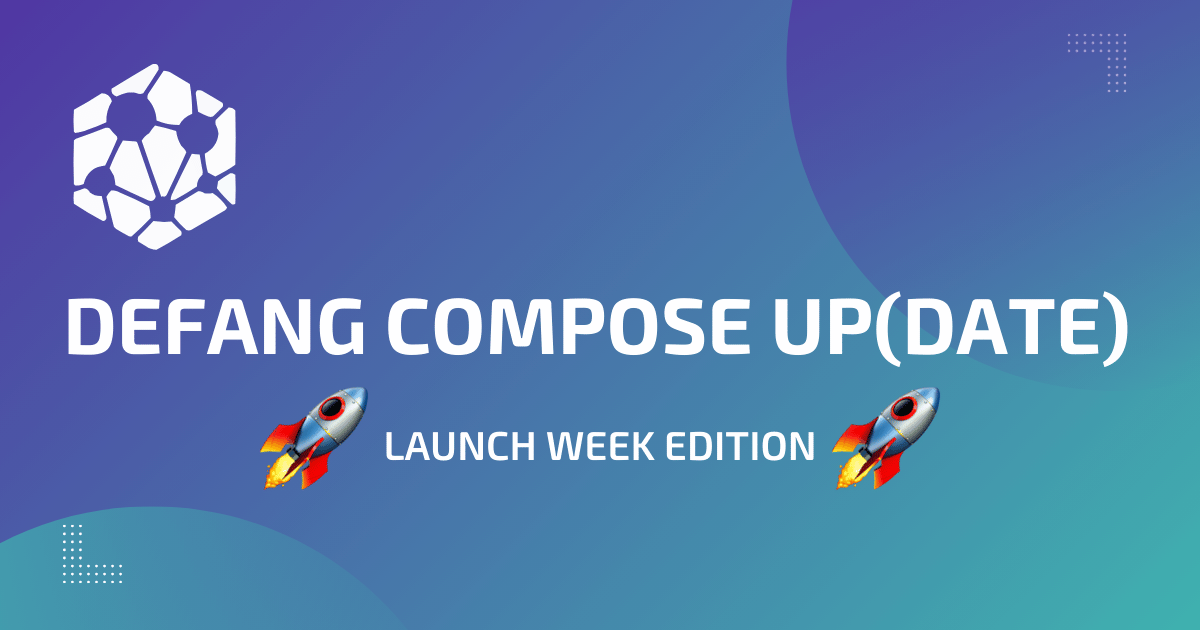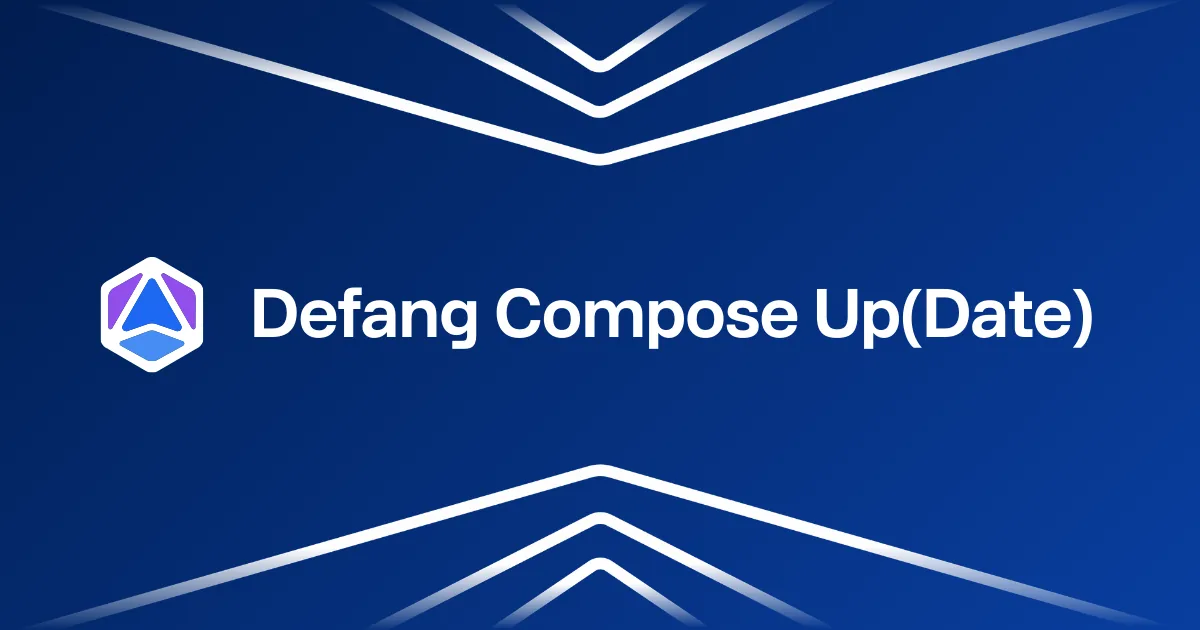Defang is live on Product Hunt!

The moment is finally here – Defang V1 is officially LIVE on Product Hunt! 🎉

The moment is finally here – Defang V1 is officially LIVE on Product Hunt! 🎉

At Defang, we’re enabling developers go from idea to code to deployment 10x faster. We’re thrilled to announce that Defang V1 is officially launching during our action-packed Launch Week, running from December 4–10, 2024! This marks a major milestone as we officially release the tools and features developers have been waiting for.

Hi everyone,
We are a little late getting our monthly update out this time, but we did ship a number of important updates in October that we would like to inform you about. And more is coming… stay tuned for that!

Hi everyone - you can feel the weather getting cooler, but things are heating up at Defang! Sep was another amazing month, with new features, new users, and new partners. Here is a quick summary:

Wow - what a month of August it has been! We made some big strides of progress on our vision of providing a radically simpler way to Develop, Deploy, and Debug portable cloud applications.

Hey folks! We can’t believe a month has gone by already, time flies when you’re having fun! We continued to make progress on our vision of providing a radically simpler way to Develop, Deploy, and Debug cloud applications. In July, we spent time on a couple of key areas:
As our user-base grows, we wanted to make sure we’re able to scale our Playground environment to be able to handle the load. This involved being able to shard the workload across multiple ALBs and being able to dynamically move some workloads across shards where possible. With these changes, we are now able handle a large number of concurrent users comfortably. The only noticeable change in behavior you would see is that Defang will now ask you to “compose down” your previous project before you are able to deploy a new project on Playground.
The major news this month was the introduction of our “debug” functionality. The motivation for this feature was that while the Defang experience is amazing when everything goes smoothly, we saw users (including our own interns who are helping write all those samples) struggle when they hit an error. The underlying reason for the error could come from a variety of sources: an error in the developer’s application (including in their Dockerfile or Compose file), an issue in the way Defang is processing the application, or an issue in the underlying cloud platform (currently, AWS). To the developer, it is often not obvious what the issue is or how to fix it. That got us thinking how we could make this debugging experience “radically simpler” and thus the idea for defang debug was born.
Now (with CLI v0.5.37 if your application encounters an error that leads to a failed deployment, a failed health-check, or a run-time error, Defang will automatically detect the issue. It will then offer to help you debug it by running the defang debug command. If you choose to proceed, Defang will apply an LLM model to try to determine the precise cause of the error, with the context of your application source, logs, error code etc. And it will try to come up with one or more actionable insights on how to fix the error. For an example, see the case below:
Behind the scenes, Defang is having a conversation on your behalf with the LLM to narrow down to the cause of the error. We would love for you to try the debug feature and give us your feedback so we can improve it further. One future improvement already on our list is the ability to, with user consent, automatically apply a chosen fix and re-try. We are also looking for way to improve the range of failures we are able to diagnose successfully.

Hey folks! We've got another batch of updates to share with you about what the Defang team has been working on over the past month. We're committed to improving your deployment experience, so let's take a look at what's new.

Hey folks! We're back with another exciting update about Defang. Our team has been working hard to bring you new features and improvements so you can get deploying faster. Here's a rundown of what we've been up to this month:

Hey folks! There is a lot going on at Defang and we're excited to share our latest product updates with you. Over the last month, we've been working hard to improve the Defang system and make it even easier for you to deploy your applications. Here's a quick overview of what we've been up to:
Hey folks! Today, I'm going to share one of our code samples that will show you how to deploy a simple Slack bot. If you're looking to connect a cloud service to Slack to publish status updates, or something else like that, this should help you get started. We'll walk through a step-by-step process of writing a Go program using the github.com/slack-go/slack library to interact with the Slack API and easily deploy it using Defang.